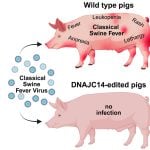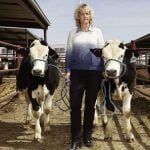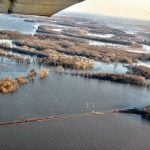Two programs through the Resilient Agricultural Landscape Program (RALP) are getting a $14.6 million boost.
The increase from the provincial and federal governments’ Sustainable Canadian Agricultural Partnership is part of a five-year investment strategy ending in 2028.
Why it matters: The investment provides farmers with financial support and tools to build long-term resiliency in the land and farm operations.
Read Also

Canada to have increased presence at Agritechnica 2025
Interest in diversifying trade markets is taking more Canadian manufacturers to Agritechnica 2025, the world’s largest machinery show.
RALP’s Marginal Lands Initiative (MLI), delivered by Conservation Ontario, will receive an additional $9.6 million on top of the existing $12 million in funding over four years.
The second intake for MLI opens on Sept. 22, 2025, for projects that enhance natural features, such as wetlands or pollinator habitats, reduce Greenhouse Gas emissions, sequester carbon, and increase ecosystem goods and services.
Eligible projects could encompass:
Strip-planting perennial cover to create grassed waterways or manage in-field salinity.
Converting marginal or high-risk annual cropland to permanent grassland or perennial biomass crops, including establishing native or tame forages.
Wetland restoration, construction of new wetlands, or creating/widening buffers in agricultural fields adjacent to surface water sources, to protect existing riparian areas
Establishing shelterbelts for farmyards, livestock facilities, fields or intercropping with trees, including planting trees or shrubs on marginal or high-risk cropland.
“Together, we’re helping farmers across the province take on environmental projects that support their farms and protect their land – both important for Ontario’s future and economy,” said Dave Barton, Conservation Ontario chair and Uxbridge mayor, in a statement.
Angela Copeland, Conservation Ontario’s general manager, stated in an email that the funding increase will be allocated based on the program’s requests and the merits of each intake submission until the program concludes in 2028.
The Ontario Agricultural Sustainability Initiative, delivered by the Ontario Soil and Crop Improvement Association, was recently granted an additional $5 million in funding to help producers with costs for planting grasslands and trees, reducing tillage, and constructing water retention features until 2028. The Initiative’s RALP intake remains open.













